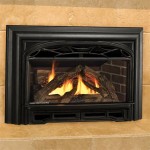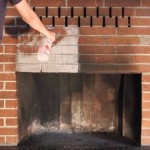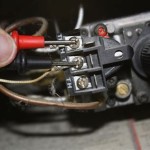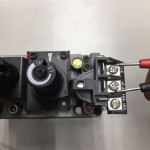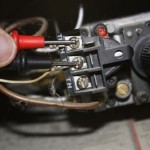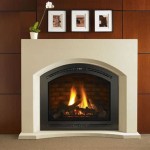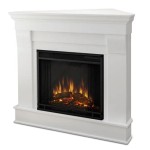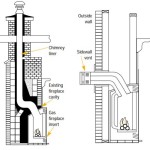Buy Fireplace Glass Door Screens: A Comprehensive Guide
Fireplace glass door screens are an essential component for any wood-burning fireplace, offering a multifaceted range of benefits that extend beyond mere aesthetics. Selecting the right glass door screen requires careful consideration of various factors, including fireplace dimensions, style preferences, functionality requirements, and safety concerns. This article provides a comprehensive guide to assist in making an informed decision when purchasing fireplace glass door screens.
The primary function of a fireplace glass door screen is to contain sparks and embers, preventing them from escaping the firebox and potentially igniting nearby flammable materials. This singular benefit significantly reduces the risk of house fires caused by stray embers landing on carpets, furniture, or other combustible items. Beyond safety, glass door screens also offer improved energy efficiency by reducing heat loss up the chimney when the fireplace is not in use. An open fireplace acts as a significant source of heat loss, drawing warm air out of the room and contributing to higher heating bills. A closed glass door helps to minimize this effect.
Furthermore, fireplace glass door screens can enhance the aesthetic appeal of a fireplace. Available in a wide array of styles, finishes, and designs, they can complement any décor, from traditional to modern. They can transform a simple fireplace into a focal point of the room, adding a touch of elegance and sophistication. The visual barrier provided by the glass also helps to conceal the often-unsightly interior of the firebox when the fireplace is not in use, presenting a cleaner, more polished appearance.
The decision to buy fireplace glass door screens is a significant one, impacting safety, energy efficiency, and the overall ambiance of a living space. Understanding the various types, features, and installation considerations is crucial to ensuring that the chosen screen effectively meets individual needs and preferences.
Key Point 1: Understanding Different Types of Fireplace Glass Door Screens
Fireplace glass door screens are available in a variety of configurations, each offering specific advantages and disadvantages. Understanding these differences is crucial for selecting the appropriate screen for a particular fireplace setup and aesthetic preferences.
Tracked Doors: Tracked fireplace glass door screens, as the name suggests, operate on metal tracks, typically positioned at the top and bottom of the fireplace opening. The doors slide horizontally along these tracks, allowing for easy opening and closing. Tracked doors are a common and relatively inexpensive option, offering a straightforward design and ease of use. However, the tracks can sometimes accumulate debris, requiring periodic cleaning to ensure smooth operation. The tracks might also be visible, which some homeowners may find aesthetically undesirable.
Bifold Doors: Bifold fireplace glass door screens consist of two or more panels that fold together when opened. This design maximizes the opening area, providing ample access for adding wood or tending to the fire. Bifold doors are often preferred for their visual appeal and ease of access. However, they can be more expensive than tracked doors and may require more space in front of the fireplace when fully opened. The folding mechanism can also be more susceptible to wear and tear over time.
Cabinet Doors: Cabinet fireplace glass door screens resemble traditional cabinet doors, swinging outward on hinges. These doors offer a classic and elegant look, often complementing traditional fireplace designs. Cabinet doors typically provide a wide opening for easy access to the firebox. However, they require ample space in front of the fireplace to swing open fully. The hinges can also be a potential point of failure, requiring occasional maintenance or replacement.
Single Panel Doors: Single panel fireplace glass door screens consist of a single, large pane of glass that swings open on hinges. This design offers a clean and minimalist look, often preferred for modern fireplace designs. Single panel doors provide an unobstructed view of the fire. However, they can be heavy and require sturdy hinges to support their weight. They also require a significant amount of space in front of the fireplace to swing open.
Stock vs. Custom Doors: Fireplace glass door screens are available in both stock and custom sizes. Stock doors are pre-manufactured in standard sizes, offering a more affordable and readily available option. Custom doors are made to order, specifically tailored to the dimensions of a particular fireplace opening. Custom doors are ideal for fireplaces with non-standard dimensions or unique design requirements. While more expensive than stock doors, they ensure a perfect fit and a more seamless integration with the fireplace surround.
Key Point 2: Factors to Consider When Choosing Fireplace Glass Door Screens
Selecting the right fireplace glass door screen involves considering several important factors to ensure that the chosen screen meets specific needs and provides optimal performance. These factors include accurate measurements, the style and finish of the screen, the type of glass used, and any additional features.
Accurate Measurements: Accurate measurements are paramount to ensure a proper fit. Before purchasing any fireplace glass door screen, carefully measure the fireplace opening, including the width, height, and depth. It is crucial to measure the opening at several points to account for any irregularities or variations. Consult the manufacturer's specifications to determine the appropriate screen size for the measured dimensions. A slightly larger screen is generally preferable to a slightly smaller one, as it can be more easily adjusted to fit the opening.
Style and Finish: The style and finish of the fireplace glass door screen should complement the overall décor of the room. Consider the existing architectural style, color scheme, and furniture when selecting a screen. Fireplace glass door screens are available in a wide range of finishes, including black, bronze, brass, nickel, and pewter. Choose a finish that complements the fireplace surround and other hardware in the room. Style options range from traditional and ornate to modern and minimalist. Select a style that reflects personal preferences and enhances the aesthetic appeal of the fireplace.
Glass Type: The type of glass used in the fireplace glass door screen is another important consideration. Tempered glass is the most common and recommended option, as it is heat-resistant and shatter-resistant. Tempered glass can withstand high temperatures without cracking or breaking. Additionally, if tempered glass does break, it shatters into small, relatively harmless pieces, reducing the risk of injury. Ceramic glass is another option, offering even greater heat resistance than tempered glass. Ceramic glass is often used in high-performance fireplaces and stoves that generate extremely high temperatures. However, ceramic glass is typically more expensive than tempered glass.
Mesh Curtains: Some fireplace glass door screens include mesh curtains that can be used to further contain sparks and embers when the doors are open. Mesh curtains are a valuable safety feature, particularly for fireplaces that are frequently used with the doors open. They provide an additional layer of protection against stray embers escaping the firebox. Mesh curtains are typically made of durable metal mesh and can be easily retracted when not needed.
Air Vents: Fireplace glass door screens with air vents allow for better airflow and combustion efficiency. Air vents help to regulate the amount of oxygen entering the firebox, promoting a cleaner and more efficient burn. This can result in reduced smoke and creosote buildup in the chimney. Air vents are typically adjustable, allowing for fine-tuning of the airflow based on the type of wood being burned and the desired burn rate.
Key Point 3: Installation and Maintenance of Fireplace Glass Door Screens
Proper installation and regular maintenance are essential to ensuring the safety, longevity, and optimal performance of fireplace glass door screens. While some homeowners may choose to install the screens themselves, professional installation is often recommended, particularly for custom-made screens or complex installations. Regular cleaning and maintenance are necessary to keep the glass clean and the mechanical components functioning smoothly.
Installation: The installation process typically involves attaching the screen frame to the fireplace opening using screws or anchors. The exact installation procedure will vary depending on the type of screen and the manufacturer's instructions. It is crucial to carefully follow the instructions provided by the manufacturer to ensure a secure and proper installation. Professional installation can guarantee a properly fitted and sealed screen, minimizing the risk of air leaks and maximizing energy efficiency. A professional installer will also have the necessary tools and expertise to handle any unforeseen challenges that may arise during the installation process.
Cleaning: Regular cleaning is essential to maintain the clarity and visibility of the glass. Over time, soot, ash, and other debris can accumulate on the glass, making it difficult to see the fire. Use a specialized fireplace glass cleaner to remove these deposits. Avoid using abrasive cleaners or scouring pads, as they can scratch the glass. Apply the cleaner to a soft cloth and gently wipe the glass clean. For stubborn deposits, allow the cleaner to sit on the glass for a few minutes before wiping it off. Always consult the manufacturer's instructions for recommended cleaning products and procedures.
Maintenance: In addition to cleaning the glass, it is also important to maintain the mechanical components of the fireplace glass door screen. Check the hinges, tracks, and latches regularly for any signs of wear or damage. Lubricate these components with a silicone-based lubricant to ensure smooth operation. Replace any worn or damaged parts promptly to prevent further damage or safety hazards. Inspect the screen frame for any signs of rust or corrosion. Clean any rust spots with a wire brush and apply a rust-resistant paint to prevent further corrosion.
Safety Inspections: Periodically inspect the entire fireplace system, including the chimney, for any signs of damage or deterioration. Schedule a professional chimney inspection at least once a year to ensure that the chimney is clean and free of obstructions. A clean and well-maintained chimney is essential for safe and efficient fireplace operation. Proper ventilation is crucial to prevent the buildup of dangerous gases, such as carbon monoxide.

Standard Size Masonry Fireplace Doors Fixed Frame

Ardmore Black Fireplace Door Woodland Direct

Fireplace Glass Doors Vs Screens Full Service Chimney

2 Door Steel Fireplace Fire Screen With Tempered Glass Accents Black Com

Fireplace Glass Doors Vs Screens

Glass Fireplace Doors Stoll Industries Browse By Type Or Style

Fireplace Glass Doors By Thermo Rite Fireplaces Unlimited Heating Cooling

Fireplace Glass Doors Vs Screens Full Service Chimney

Kingson 2 Panel Fireplace Screen Door

Gas Logs And Fireplace Doors The Fire Place Ltd
Related Posts

